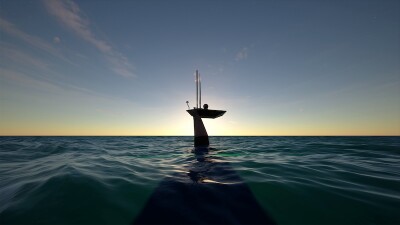It’s not every day that spectators turn out to watch a barge tow, but Coeymans Marine Towing provided quite a spectacle on the Hudson River this week.
The transit of the newly built 130’ tall, 4,000-short-ton heat recovery steam generator (HRSG) for a new powerplant in New Jersey covered 170 miles in two days. It was the largest project ever constructed at the decade-old Port of Coeymans Inc. marine terminal near Albany, N.Y., and the tallest, heaviest object ever moved on the river.
"By barge, this would be the biggest by height and weight," said Stephen Kelly, Coeymans vice president of sales and business development. "When we planned it from the beginning, we had to reach out to the pilots and Hudson River shippers."
Lashed on the 100’x99’9”x20’ Marmac 400 ABS load line deck barge from McDonough Marine, Metairie, La., the HRSG left Monday morning with three CMT tugboats: the 80’x27’x12’, 2,600-hp Mister Jim; the 75’x26’x9.5’, 2,200-hp Helen Laraway; and the 62’x24’x8.7’, 1,200-hp CMT Otter.
"We wanted to navigate on the northern part of the Hudson River during the day," and arrive at the cross-Hudson bridges during optimum tide conditions, said Kelly. "We lost a little time in the northern part of the Hudson because we were fighting the tides."
Tidal influence extends far north on the fjord-like Hudson. Height challenges were posed by the Mid-Hudson and Newburgh-Beacon bridges on the river, and the Arthur Kill Vertical Lift Bridge and new Goethals Bridge between New Jersey and Staten Island, all with nominal minimum clearance of 135’.
"We were 1'9" lower than we originally anticipated. We thought we would be at 132' (height) but it came out to 130'," said Kelly. The tow passed the Mid-Hudson Bridge at Poughkeepsie, N.Y., around 8:45 p.m. – to applause from a small flotilla of boaters gathered to witness the transit .
"We were probably 4' to 5' (clearance) at Poughkeepsie," said Kelly. The CMT crews navigated the Newburgh, N.Y. span around midnight. The cargo arrived on schedule around 5 p.m. Tuesday afternoon in the Arthur Kill channel, for delivery to the Public Service Electric & Gas Sewaren 7 project in Woodbridge, N.J.
"The timing worked out to be perfect," said Kelly.

The Heat Recovery Steam Generator under construction. Port of Coeymans photo.
The HRSG cost $195 million to build at Coeymans, where it employed 350 workers at its peak. It is an integral part of the new $600 million dual-fuel 540 megawatt plant, which will primarily run on natural gas according to PSEG.
The Port of Coeymans is marking its 10th anniversary this year on the site of the old P&M Brick Company plant that port president Carver Laraway and a partner purchased in 2001. Once a terminal that shipped large volumes of red brick to New York City, the renovated port has become a major fabrication and shipment point for infrastructure projects in the region. The robin’s egg-blue steel girders supporting the new New York Thruway bridge over the Hudson, assembled at Coeyman’s, have been a familiar sight as they were towed down to the river to the Tappan Zee.
The port has emerged as a logical place for building big components for urban infrastructure sites where there is little room. It started in 2010 with the Astoria II 575 MW combined cycle power plant project in Queens, N.Y., and the need to build cooling towers.
"They didn't have the space in Astoria to do the work" and Coeymans, with its deepwater access and proximity to highways, became the fabrication site, said Kelly. Since then the port and its adjoining industrial complex has been used by other suppliers such as General Electric, and two years ago Coeymans officials began talking to PSEG about its Sewaren 7 project.
Like Astoria, the PSEG property lacked the elbow room for assembling the massive HRSG. Coeymans made a pitch, won the job, and the first components began arriving in October 2016. In January, mechanical constructor Megrant, West Babylon, N.Y., began assembling the 250- to 350-ton frames for the HRSG.
Delivering the piece was the second tight-fit transit by CMT this summer. On July 26, the same trio of tugs that moved the HRSG removed the old Kosciuszko Bridge from Newtown Creek in Brooklyn, squeaking the 300'x89' steel span out to the East River on two barges.
"So we had two big ones in a row," said Richard Robinson, Coeymans general manager. The secret to the port's success, he said, is its combination of facilities, expertise and logistics: "We're a one-stop shop."





